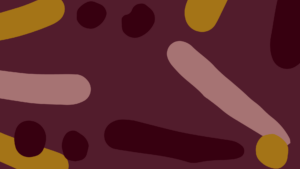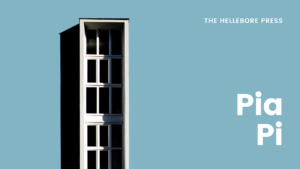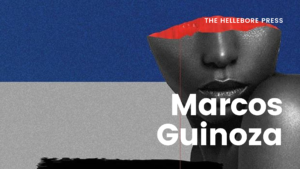De’Anne Crooks, artist-educator, is on the rise. Her artwork captures pressing issues within society by reminding audiences of the intersections between mental health and identity. Deep brush strokes characterize magnetic portraits of loss, pain, love, and resilience- beaming with a message of transformation to ultimately reclaim truth.
De’Anne Crooks uses the canvas to reignite hope, challenge misconceptions, and uplift Black narratives through an unapologetic lens within the forthcoming exhibition:
Two Truths and a Lie
Would you mind telling The Hellebore audience about Two Truths and a Lie?
Two Truths and a Lie (TTAAL) is so precious to me, I think that is because it will be my first solo exhibition, but I think it is more about how relevant the narrative is. TTAAL is an artistic and educational project about race, mental health and identity. It encompasses facts about black British history, misconceptions regarding mental health and discovering your identity with confidence; in visual form. TTAAL uses an exhibition platform and a series of workshops to engage the community in a conversation that highlights the truth about identity, the truth about well-being and how lies can hinder self-preservation. I will exhibit some dynamic artwork, in which I have learned so much from by simply creating them and my TTAAL team and I will also deliver a series of illustrative and visual art workshops that explore the ways in which art can work as a therapeutic and reformative tool towards greater understanding within society. The project takes place in an inner-city industrial gallery space for two weeks in July 2019 to allow for a wider reach amongst young people who, at this stage, would be on summer break.
Why is it important to have conversations about mental health? Particularly in the Black community?
There are disagreements about the correlation between poor mental health and race but when you look closer at intersectionality you begin to find alarming links
between socio-economic status, wealth, genetics and mental health. I think there are two reasons why conversing about mental health particularly relating to the black community is important. As a society, if we ignore the patterns amongst black people suffering with poor mental health then we are denying a large group of people the help that they desperately need. But intrinsically speaking, we as a black community can be very harmful to the development of mental health support. I say this because, culturally, we have only recently begun to acknowledge mental health difficulties as a real issue- this has set us back considerably and has allowed mental health conditions to develop without intervention due to the stigma and ignorance. Whether we are starting the conversation or simply joining in, talking about mental health educates us on the facts about some very real and pervasive health conditions affecting black people. It is very easy to label and dismiss ‘that’ uncle or distant cousin who acts strangely at family functions, but have you ever considered that they could be suffering from a psychosis-related health disorder or dealing with BPD, depression or mania? I think we as a community have to treat mental health just as we treat physical health because, ultimately, they are both mightily important.
What is your motivation for creating art that responds to pressing issues within society?
When I was 11 years old, one of my high school teachers commented on the power, or the lack thereof, within my voice. He said that I had “somewhat of a background voice”. At the time, I did not realize how damming this comment was. It was only as I stumbled into adulthood I realized that this comment had deeply anchored itself into my self-esteem and caused me to feel ignored in every area of my life. Subsequently, in attempt to have my voice heard, I ended up in a teaching career whereby my voice being heard is a core part of my job. This comment silenced me initially but not permanently. When I encounter societal issues such as systematic racism, negative stigmatization of mental health and the ever-growing exploitation of a generation’s search for their identity, I ache to address these issues. The desire to do something about it, start or engage in a conversation about such things is immense. I still struggle with the notion that people may not always be listening to what I say; it’s this insecurity that motivates me to create. People can ignore what I say but they find it harder to ignore the art that I create. I create art about these issues because art transcends socio-cultural boundaries and penetrates the mind and heart. Art forces its way past accent, tone, vocabulary and causes you to look up from your phone. Art is my way of having a much-needed conversation about real pressing issues.
How can artists use their platform to empower and re-energize the masses?
Empowering and re-energizing those around us is a duty given to all artists. As artists we have been given a talent and being selfless with this talent is sort of an unspoken code of conduct amongst creatives. We have one of the most profound opportunities to communicate with a mass of people and I think that we should find a balance between creating art for our own expression and using art to speak, challenge, inspire and educate. Artists are lucky because we have a plethora of ways in which we can use our gift to empower and re-energize. Personally, I suggest beginning with who you are and by that, I mean, addressing an issue that affects you or somebody you know. We may not be well-versed in every area of life, but we can begin by speaking on the things that affect us. I use my platform to empower other young people, other black people, other women, other disabled people, I do this because I have a basic understanding of these sociological groups. But our responsibility does not stop there. I began with who I am but then began to research mental health and empower and educate others about a topic that I didn’t immediately identify with. I like the words empower and re-energize because, if I am completely being honest, if my work does neither of these things then I may as well find another passion.
What perspectives are missing from the media? How can the art industry embrace inclusion and equity to fill that void?
I think an unbiased, diverse, socially educated cohort of people are missing from the media universally and this is significantly affecting perspectives. The media are supposed to present news, but information is not always factual or/and supported by valid arguments and, as of late, it has resulted in ‘fake news’ and ‘alternative facts’. We have been conditioned to trust what the media present to us, but recently this has become more confusing because in most cases the media’s perspective is blurred by bias. I think that the art industry has a huge role to play in media reform because much of how information is presented is done so through artistic form. When we think of art as a form of communication we make the mistake of thinking only of the performance arts or visual arts but in terms of the media, we should be focusing on producers, editors, photographers, graphic designers, web designers and advertisers. These are the artists in powerful positions, artists who can make a significant difference within the media. Whilst they may not consider themselves artists or identify with the art industry, they cannot deny that they are creatives and creatives working within the media are pertinent in embracing inclusion and equality.
Describe the importance of the arts in education. How can the public continue to advocate for arts programs?
I believe that arts in education should be considered as paramount as English, Mathematics and Languages. There are many points in life where we are challenged with trauma and discord, we are taught how to apply multiplication to our grocery shop but not encouraged how to apply the ability to express ourselves creatively in stressful scenarios. Art as a therapeutic tool alone is the answer to many societal issues we face today and, in most cases, if people were encouraged to develop an artistic outlet they may even begin to discover their identity. We place art at the bottom of the educational hierarchy of subjects but demand so much of art within society. We, as a public, expect innovative music, fashion, tv shows, films, adverts, packaging and websites but I don’t think that the government invest enough in these areas within school. Simply recognizing these roles as pivotal and respected careers would be a great way to increase advocacy for arts programs.
Where do you draw inspiration?
Like most artists, I am inspired by life; good, evil, love, pain, time, loss, identity and in some cases, religion. These topics affect and inspire me in different ways but in order for me to feel inspired enough to narrate, the topic needs to move me intimately and fervently. How I discuss these life-topics is often inspired by other renowned artists. Artists such as Harmonia Rosales, Kehinde Wiley, Lubaina Himid, Amy Sherald, Titus Kaphar and Jean Michel-Basqiuat use fine art as a conversational tool; changing perspectives and narratives everywhere. I aspire to use my perspective, coupled with my artistic abilities, to produce influential pieces of art.
Most recently, I have discovered that my emotions inspire my work in a perplexing way. Whilst I consider myself to be an emotionally intelligent person, which can sometimes be mistaken for solely having the ability to understand and articulate my own emotions as well as the emotions of others, I have actually found myself becoming consumed by my own emotions. Rather than wrestling with this overwhelming abundance of feelings, I chose to surrender to them and let my hands create something in that very moment; this has proven successful as you will be able to see in my upcoming works.
How do you practice self care as an artist? What advice do you have for other professionals, students, artists, and educators in the field who may face challenges and obstacles in the industry?
As an artist, I consider the practice of self-care naturally accessible. Painting, drawing, sculpting and designing are naturally therapeutic activities, however, when I have been commissioned to create a piece of art and the deadline is fast approaching then being an artist can become stressful. In a case like this art is no longer my release and so I turn to talking to my best friend or sister, meditating, listening to music, reading and exercising.
I am still finding my own way in the art industry, so I feel quite humbled to answer this question. My advice would be, particularly for the aspiring artist-educators, to never compromise on your concepts, do not be pretentious about feedback and criticism and share your enthusiasm for art with your students; your passion is more infectious than you know. In terms of being an artist, the most important thing that helped me to overcome obstacles in the profession was to remind myself of my own definition of success. It is so tempting to compare the artwork that you produce to the work of others, but this isn’t healthy, and you will gain more from being inspired by others than coveting their success. Committing to a particular style, technique or topic can be advantageous when first establishing your profile but you do not owe it to anybody to box yourself in or promise your audience one type of art. Explore, be authentic and be professional at all times and no matter what challenges you face, remember why you create.
De’Anne is a British artist-educator who prides herself on having visual conversations about pertinent issues. At 28 years old, De’Anne is currently working in further education, teaching art and design whilst preparing for her debut solo exhibition. De’Anne’s work often tells the story of identity, love, sorrow and morality. Having such a close relationship with her grandparents, De’Anne is often influenced by her Jamaican heritage and presents herself as an honorary dual citizen who debates the topic of ‘belonging’ in her recent project “Two Truths and a Lie”. With more exhibitions, teaching opportunities and collaborations in her sight, De’Anne’s presence within the art industry will be hard to ignore.
Twitter & Instagram: @De4nnecrooks
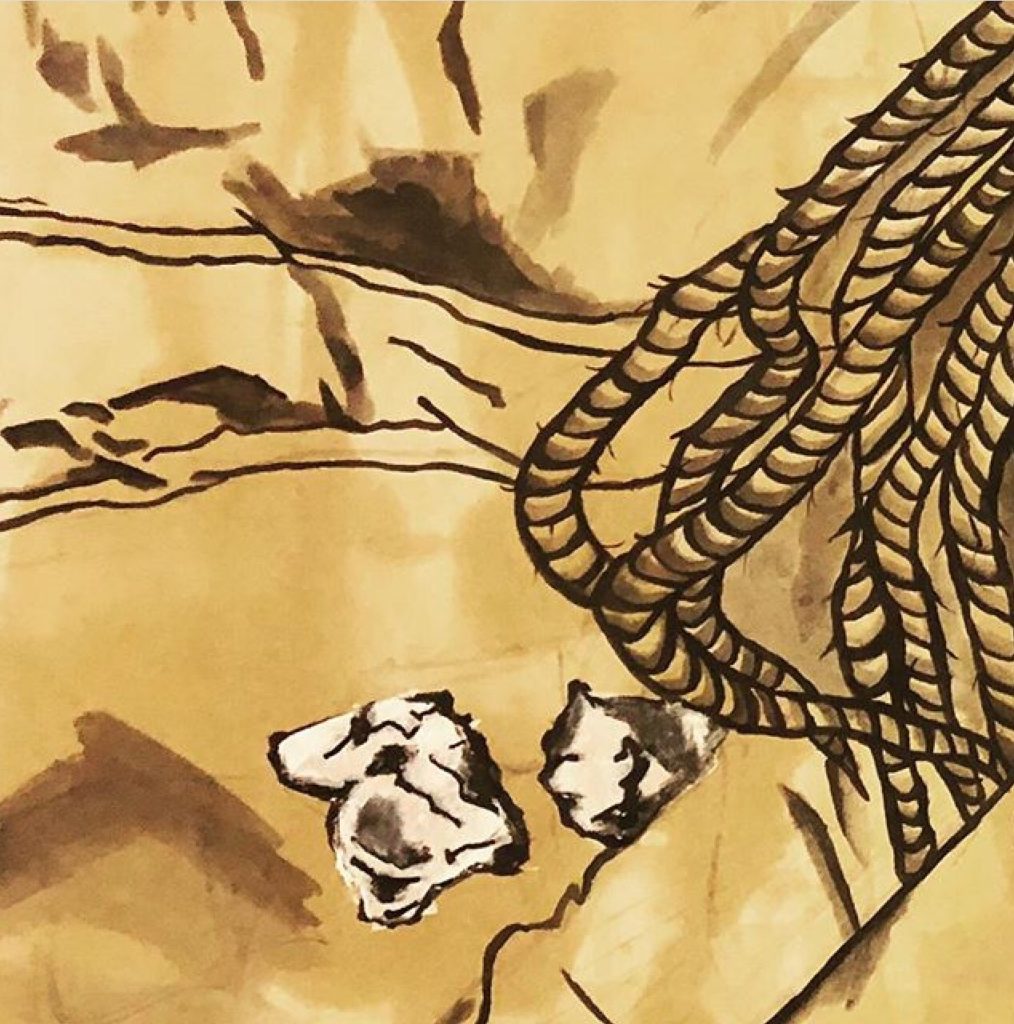
“Just Health” Ink/Water/Oil Paint on canvas 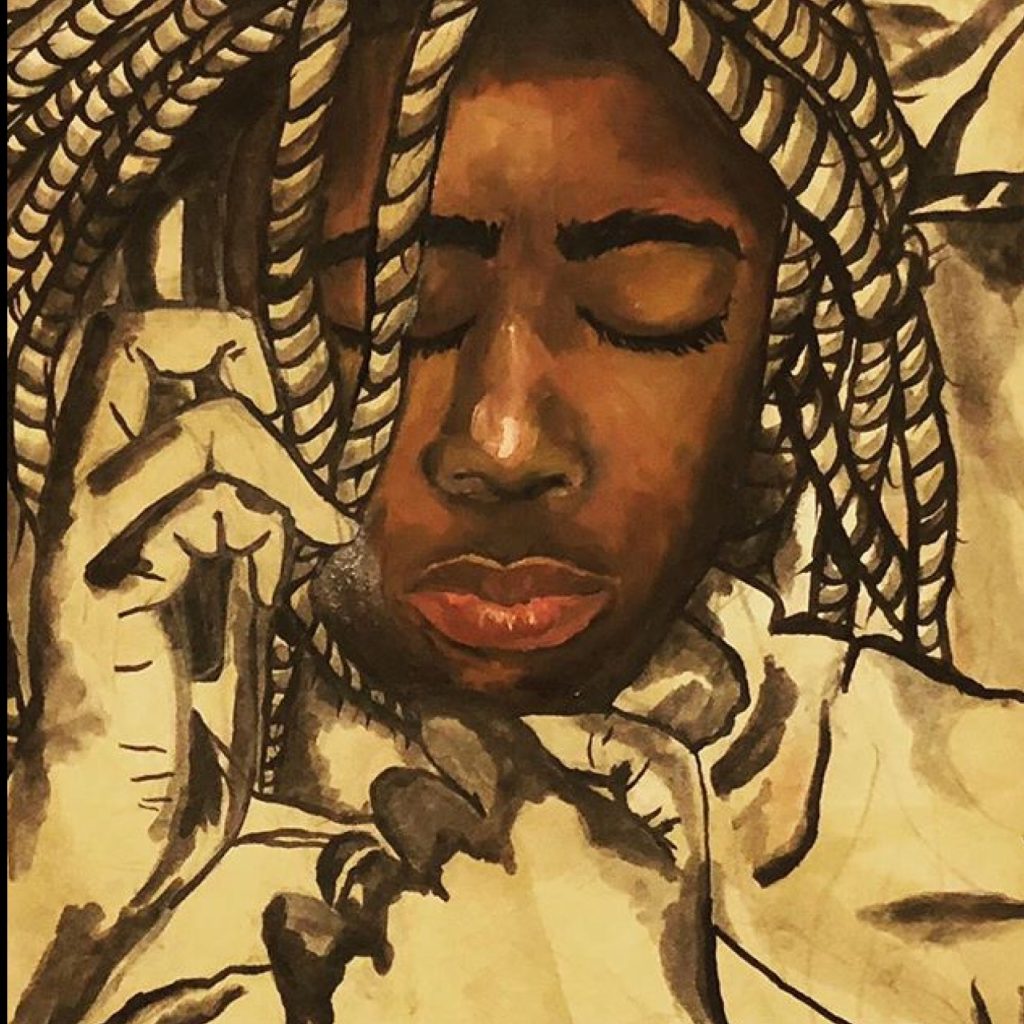
“Just Health” Ink/Water/Oil Paint on canvas 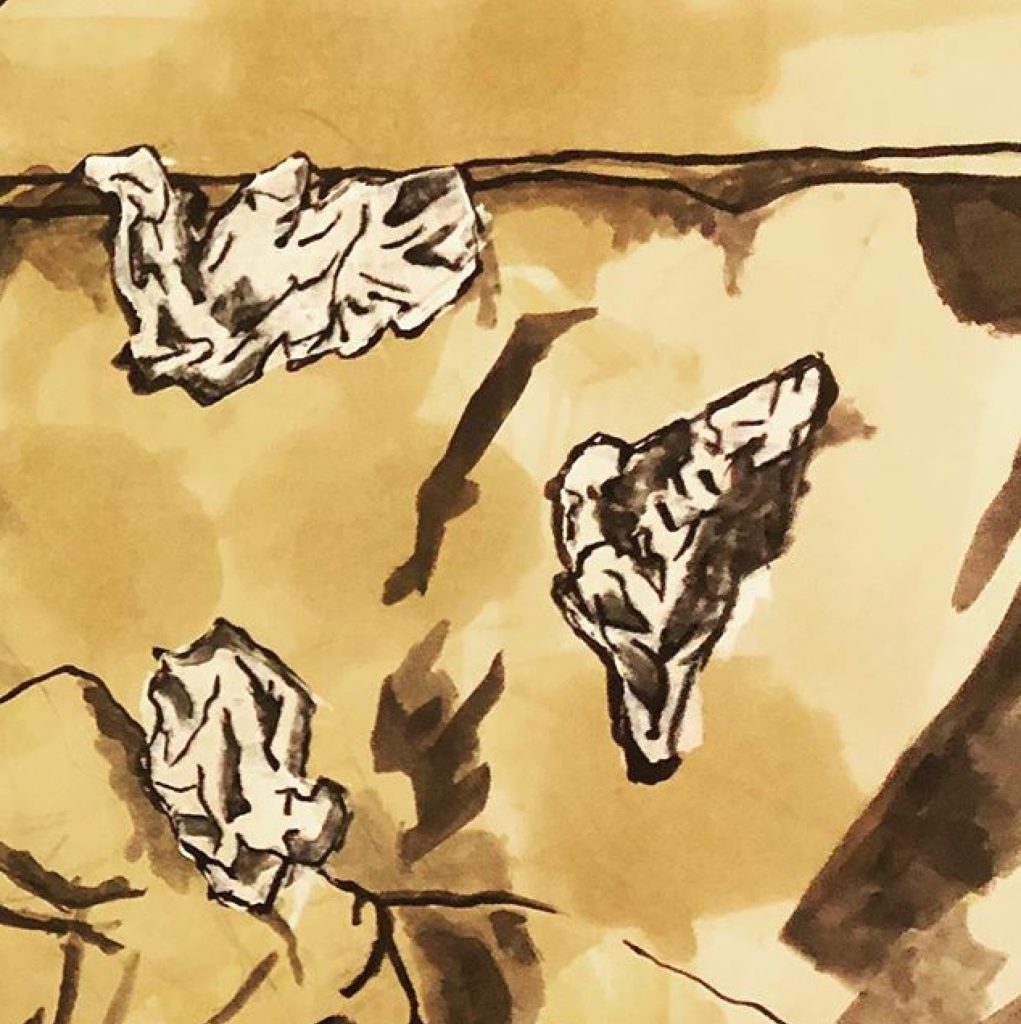
“Just Health” Ink/Water/Oil Paint on canvas
